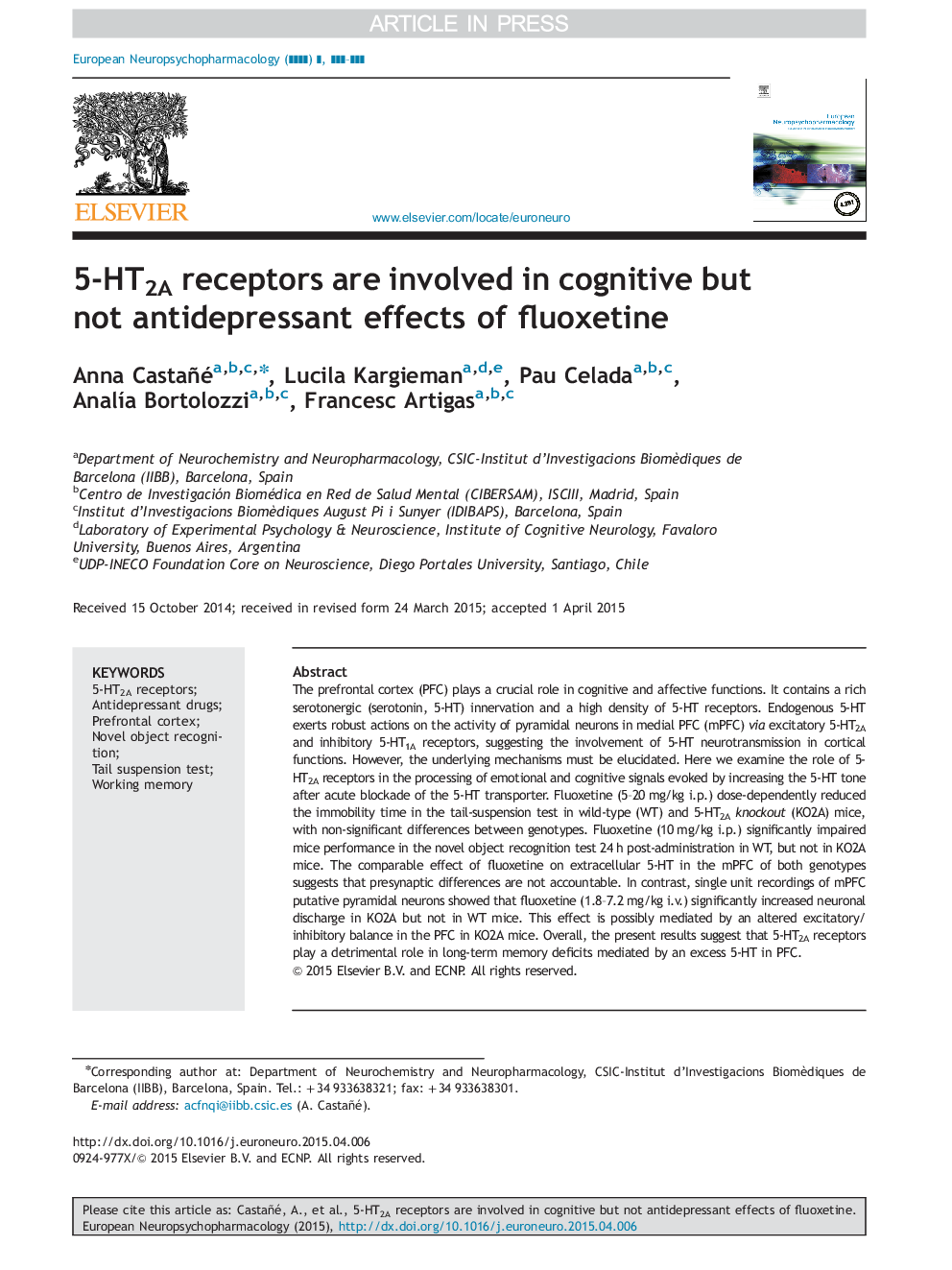| Article ID | Journal | Published Year | Pages | File Type |
|---|---|---|---|---|
| 10298089 | European Neuropsychopharmacology | 2015 | 9 Pages |
Abstract
The prefrontal cortex (PFC) plays a crucial role in cognitive and affective functions. It contains a rich serotonergic (serotonin, 5-HT) innervation and a high density of 5-HT receptors. Endogenous 5-HT exerts robust actions on the activity of pyramidal neurons in medial PFC (mPFC) via excitatory 5-HT2A and inhibitory 5-HT1A receptors, suggesting the involvement of 5-HT neurotransmission in cortical functions. However, the underlying mechanisms must be elucidated. Here we examine the role of 5-HT2A receptors in the processing of emotional and cognitive signals evoked by increasing the 5-HT tone after acute blockade of the 5-HT transporter. Fluoxetine (5-20Â mg/kg i.p.) dose-dependently reduced the immobility time in the tail-suspension test in wild-type (WT) and 5-HT2Aknockout (KO2A) mice, with non-significant differences between genotypes. Fluoxetine (10Â mg/kg i.p.) significantly impaired mice performance in the novel object recognition test 24Â h post-administration in WT, but not in KO2A mice. The comparable effect of fluoxetine on extracellular 5-HT in the mPFC of both genotypes suggests that presynaptic differences are not accountable. In contrast, single unit recordings of mPFC putative pyramidal neurons showed that fluoxetine (1.8-7.2Â mg/kg i.v.) significantly increased neuronal discharge in KO2A but not in WT mice. This effect is possibly mediated by an altered excitatory/inhibitory balance in the PFC in KO2A mice. Overall, the present results suggest that 5-HT2A receptors play a detrimental role in long-term memory deficits mediated by an excess 5-HT in PFC.
Keywords
Related Topics
Life Sciences
Neuroscience
Biological Psychiatry
Authors
Anna Castañé, Lucila Kargieman, Pau Celada, AnalÃa Bortolozzi, Francesc Artigas,
